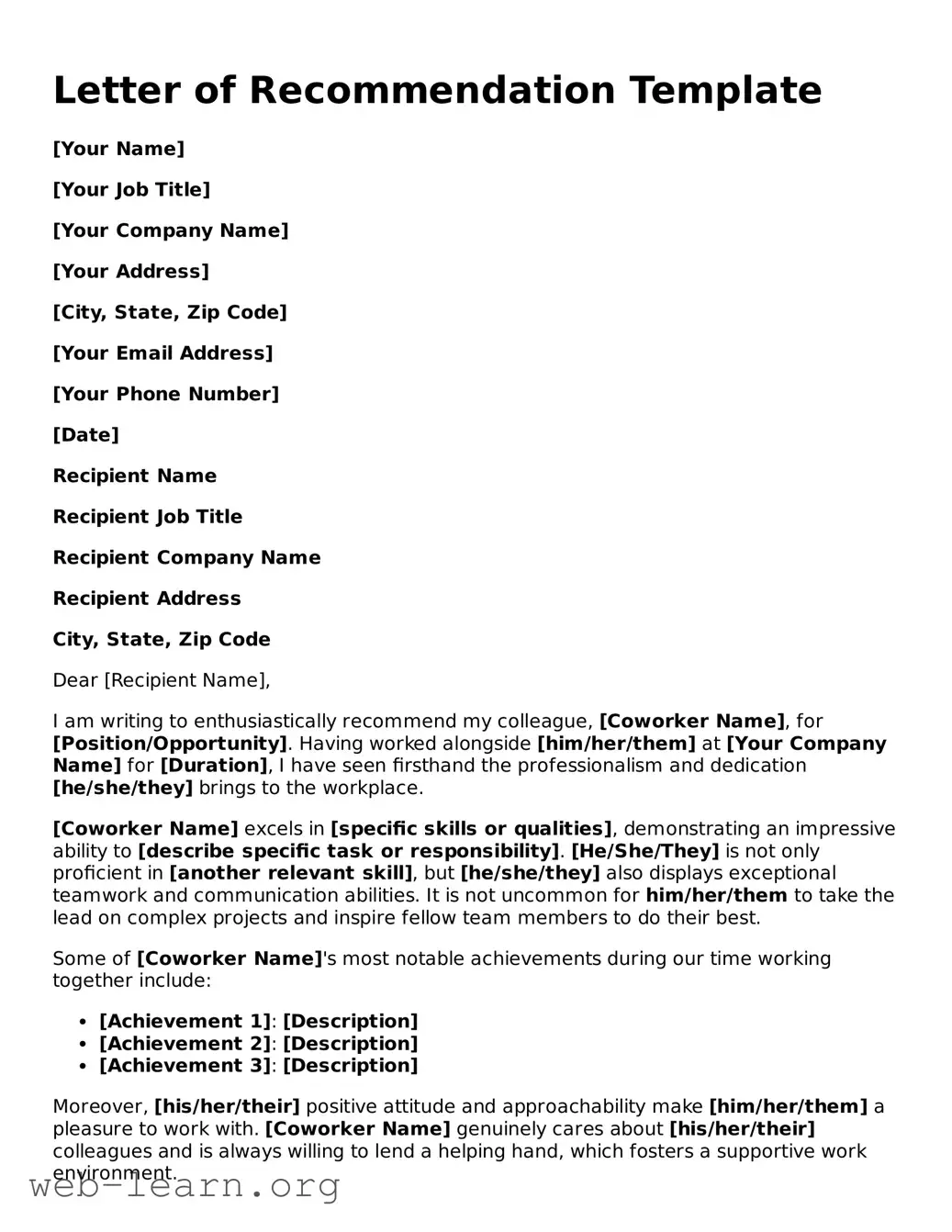Letter of Recommendation Template
[Your Name]
[Your Job Title]
[Your Company Name]
[Your Address]
[City, State, Zip Code]
[Your Email Address]
[Your Phone Number]
[Date]
Recipient Name
Recipient Job Title
Recipient Company Name
Recipient Address
City, State, Zip Code
Dear [Recipient Name],
I am writing to enthusiastically recommend my colleague, [Coworker Name], for [Position/Opportunity]. Having worked alongside [him/her/them] at [Your Company Name] for [Duration], I have seen firsthand the professionalism and dedication [he/she/they] brings to the workplace.
[Coworker Name] excels in [specific skills or qualities], demonstrating an impressive ability to [describe specific task or responsibility]. [He/She/They] is not only proficient in [another relevant skill], but [he/she/they] also displays exceptional teamwork and communication abilities. It is not uncommon for him/her/them to take the lead on complex projects and inspire fellow team members to do their best.
Some of [Coworker Name]'s most notable achievements during our time working together include:
- [Achievement 1]: [Description]
- [Achievement 2]: [Description]
- [Achievement 3]: [Description]
Moreover, [his/her/their] positive attitude and approachability make [him/her/them] a pleasure to work with. [Coworker Name] genuinely cares about [his/her/their] colleagues and is always willing to lend a helping hand, which fosters a supportive work environment.
In conclusion, I wholeheartedly recommend [Coworker Name] for [Position/Opportunity]. [He/She/They] will undoubtedly contribute positively to your team. Please feel free to contact me at [Your Phone Number] or [Your Email Address] if you wish to discuss [his/her/their] qualifications in further detail.
Thank you for considering this recommendation.
Sincerely,
[Your Name]
[Your Job Title]
[Your Company Name]
